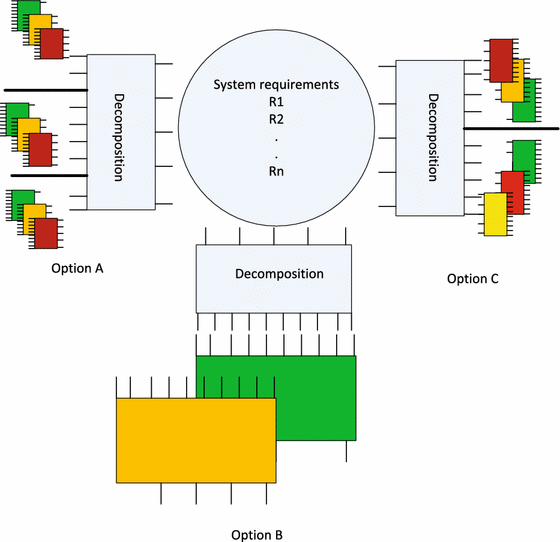Recursive Model Analysis for Shopify in 2025
In 2025, data-driven insights will be more important than ever for Shopify merchants who want to stay competitive. Recursive Model Analysis (RMA) is not just about following the data. It also provides patterns and results to the business owners, enabling them to make better decisions. Through repeated cycles of data analysis, RMA provides Shopify store owners with a live picture of customer behaviour, sales patterns, and inventory requirements to meet the dynamics of a competitive market environment.
Hence, through RMA, Shopify merchants stand to notice trends in the market, customers, and products that can easily go unnoticed with normal analytics. This helps them provide better customer services, hold the right inventory, and use their marketing strategies in the best possible way. In other words, the use of RMA means that Shopify merchants have a strong ally in managing the current problems of e-commerce and preparing for future success.
What is Recursive Model Analysis?
Recursive Model Analysis (RMA) is a process in data analysis where recursive enhancement of the predictions is done by passing the outcome of one model as input into the model for further processing. This approach is especially valuable in RMA for Shopify because it is a way for merchants to keep developing their insights into important business variables such as consumers’ activity, sales performance, and stock. RMA for Shopify is capable of giving store owners the ability to learn from prior data and constantly adjust the marketing strategies in real time to ensure that the needs of the customers are met. Such a level of information gives Shopify merchants a competitive edge as they operate in a fast-growing environment.

Why is RMA Important for Shopify Stores in 2025?
By 2025, the growth of e-commerce will be more rapid than before, and the ability to adapt quickly to the changes is critical to success. However, RMA is crucial for Shopify stores as it enables the constant analysis of new data that merchants can better understand in real-time. The ability to take the output of one model and input it into another model is the core strength of RMA since it allows businesses to adapt to changes in customer behaviour, sales and inventory on an ongoing basis. Such flexibility is crucial in the context when the market can change rapidly, and data-driven decisions for Shopify stores make all the difference in staying relevant and profitable. RMA provides merchants with the knowledge that will allow them to make better decisions faster, thus allowing them to be ready to face the dynamic market.
Use Cases of RMA in Shopify
1. Understanding Customer Behaviour
With RMA, Shopify store owners can dig deeper into what makes their customers tick—from the products they love to their buying patterns. This continuous e-commerce model analysis means Shopify merchants don’t have to guess when predicting product preferences or spotting trends in how often customers return, what they abandon in carts, and even why they do so. By personalising offers and recommendations based on these insights, merchants can create experiences that feel more tailored, ultimately leading to happier customers and a stronger connection with their brand.
2. Smarter Inventory Management
RMA is like a guide for stocking the right products at just the right time. Here’s how this e-commerce model analysis helps:
- Prevents overstocking or running out by forecasting product demand.
- Uses a mix of past and current data to know exactly what’s needed.
- Helps streamline costs by optimising storage and shipping decisions.
By keeping track of these trends continuously, Shopify businesses can make sure they have what customers are looking for—without overloading on stock or missing out on popular items. It’s about keeping things balanced, so products are ready when customers want them.
3. Fine-Tuning Marketing for Better ROI
RMA can make a big difference in marketing ROI by highlighting which campaigns actually work. Instead of spreading resources too thin, Shopify merchants can zero in on the strategies that convert best. This ongoing e-commerce model analysis helps merchants maximise ad budgets, giving more attention to high-engagement channels and dialling back on less effective efforts. With RMA, every marketing dollar is spent with more confidence, as it focuses on what genuinely brings in customers and drives sales growth.

Key Benefits of Recursive Model Analysis for Shopify
1. Continuous Data Learning
One of the standout features of RMA is its ability to keep learning and adapting, which means every prediction gets sharper over time. Unlike traditional models that stick to static information, Recursive Model Analysis processes each new piece of data as it comes in, constantly refining its recommendations. This ongoing improvement ensures that Shopify merchants benefit from insights that are always in tune with the latest trends and customer behaviors, allowing for smarter, more timely decisions.
2. Enhanced Forecasting
RMA takes forecasting to the next level, providing a much clearer and more dynamic view of everything from sales predictions to market shifts. Instead of merely reacting to changes, merchants can anticipate what’s around the corner. This proactive stance means Shopify businesses can prepare for future demands with confidence, leveraging RMA to consistently stay ahead of the game in their industry.
3. Data-Driven Decision Making
With RMA, Shopify merchants are empowered to make decisions rooted in the most reliable, up-to-date insights available. Whether it’s fine-tuning pricing strategies or crafting customer retention plans, each decision becomes more strategic and informed. The ever-evolving data ensures that every choice aligns with current market conditions, giving merchants the confidence they need to take action that supports their growth goals.
Challenges and Considerations of Implementing RMA
Embracing Recursive Model Analysis (RMA) can bring incredible insights to Shopify merchants, but it’s not without its hurdles. Here are some key challenges to keep in mind as you consider adopting this powerful tool.
- Ensuring Accurate, Clean Data: At the heart of effective RMA is the quality of your data. If the data you’re working with is flawed or inconsistent, it can lead to predictions that miss the mark. So, it’s vital to prioritise collecting accurate and relevant data to get the most out of RMA.
- Managing Technical Complexity: Setting up recursive models can feel like a daunting task, especially if you’re not familiar with the technical side of things. Many merchants might find the process complicated, which is why having a solid plan and perhaps seeking help from experts can make a world of difference.
- Balancing Cost and Resources: Adopting RMA often comes with expenses for software, training, and ongoing support. It’s important to weigh these costs against the benefits you expect to see. Ensuring you have the necessary resources to support your RMA efforts is key to making the most out of this investment.

Future of RMA in Shopify
Recursive Model Analysis (RMA) for Shopify merchants is set to have a very promising future as e-commerce advances. The new directions and strategies of RMA involve the application of AI and machine learning to help merchants make decisions based on real-time processing of large volumes of data. After 2025, RMA will not only allow the owners of Shopify stores to respond to the existing trends but also to predict the changes in the market and consumer behaviour. Such a proactive strategy will enable firms to make corrective actions in their inventory management, marketing and customer relations. In the end, as RMA grows, it will serve as an essential resource for anyone interested in navigating the complex world of e-commerce to help merchants capture new opportunities and create unique experiences that will be meaningful to their targeted audiences.
Key Benefits of Recursive Model Analysis for Shopify
Benefit |
Description |
| Continuous Data Learning | The models update the predictions to the current state, making the insights more accurate. |
| Enhanced Forecasting | Enhances the ability to predict the sales and market trends to make early anticipations. |
| Marketing ROI Optimization | Refines the marketing plans for a greater rate of return. |
| Inventory Optimization | Informs the organisation on the likely demand so that it doesn’t stock excess inventory or end up with stockouts. |
| Data-Driven Decision Making | It helps to make sure that decisions are made based on the data that is most useful. |
Conclusion
From the analysis of the expanded and continuously developing world of e-commerce in 2025, Recursive Model Analysis is becoming a powerful tool for Shopify merchants. This important tool enables business owners to leverage data to improve their decision-making and business planning. Through constant adaptation to data, RMA not only aids in the optimisation of marketing and inventory management but also in improving the customer journey and, thus, sustainable growth. In this journey, IDG can significantly contribute with the right insights and analytics to support Shopify merchants in the optimal deployment of RMA and its continuous success.






